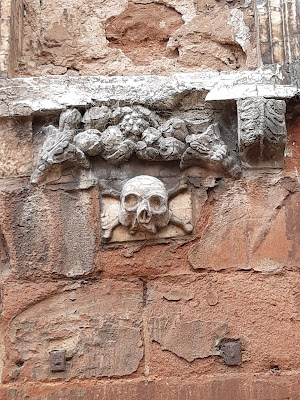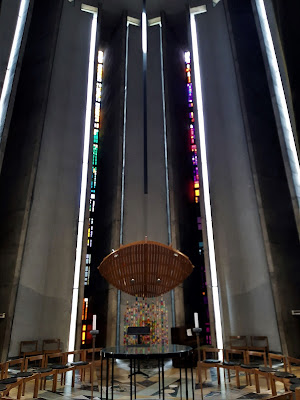And so to the summer floating market on the Kennet and Avon canal, this time on Darlington Wharf in Bath. (They call it the floating fayre these days, but I like floating market, as it sends me straight to Neil Gaiman's 'Neverwhere'.)
We weren't entirely sure whether we should take Cwtch with us or not; she's had a sheltered life so far, especially during her formative months, being a lockdown pup, and she was quite nervous at the Christmas floating market in Bradford-on-Avon, but she took it all in her stride this time. (Apart from some bloke we met asking if she was a husky ... 😂 )
We had a cup of coffee with Dru and Jinny on the towpath next to NB Eve. (It was so good to see Jinny back at the west end of the K&A and to be able to give her a hug at last.) Then Dru mentioned the poetry reading taking place at the buskers' spot and how I could read and I said I had no poems with me to read (despite having the Satchel of Poetry on me) and Dru said you've got one in the book and put a copy of 'Poets Afloat' in my hands and the Northerner said I lit up like a Christmas tree - in summer! - and that was that.









.jpg)
.jpg)
















































